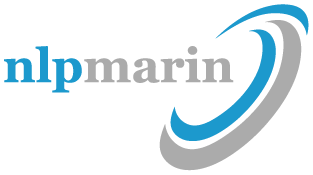What’s Right About What’s Wrong

Suffering in Good Conscience
January 9, 2009
Note to Self: Life Is Easier Than You Think
January 9, 2009What’s Right About What’s Wrong
by Julie ClaytonNLP Marin Master Practitioner graduate & freelance editor and writer in Portland, Oregon
First published in Open Exchange magazine (2007)
Have you ever wondered why you have to work so hard to get the things you want, when the things you don’t want in your life seem to occur and recur without any effort at all? Do you know that for many adults, our biggest secret fear is that we will be discovered to be a “fake,” to be less than we present ourselves to be? How is it that we can be so seemingly “successful” in many ways and yet we remain unsettled by feelings of inadequacy or by the events in our life experience that seem flawed?
We carry on wars within ourselves, inner contortions of conflict and fear: things from which we have been running away all our lives, or dreams that we’re always moving toward and never quite achieving. For some, life is an endless stream of personal crises, while for others life is mostly good, except for that occasional feeling that we’re not quite fulfilling our potential, or our embarrassing addiction to daytime soap operas.
But what if those nagging under-achievements or prevailing maelstroms were not a problem? What if what’s “wrong” is actually a positive by-product of an overzealous and outdated system for survival, and could easily be updated? What if we truly have all the resources we need to move from duality to wholeness?
Many of us are exiles from our childhood. In the moment of wounding our very survival is at stake, and how we adapt to survive the experience becomes trapped deep in our unconscious mind—not to traumatize us, but to preserve the learning. Courtesy of the reptilian brain (whose only concern is for creature-level safety and physical survival), our wounding becomes a survivable event, and hence we have no need to avoid future iterations. Our mammalian brain, next up on the brain food chain, adds strong emotions that support our well being. Our reptilian and mammalian systems together code our wounding as not only survivable, but as a prerequisite for survival. They’re just doing their job.
Neurologically speaking, inner conflict occurs when the frontal and pre-frontal human brain, which is a much more sophisticated driver for our experience, desires something that seemingly contradicts our reptilian brain’s functions. (We really do want to have a lasting intimate relationship, even though our four previous marriages lasted only two years each.) Neural patterns of long-term happiness and desire crash in to reptilian patterns of survival. Since survival is the number one impulse for staying alive, the outdated programming invariably reigns. The content of survival is perfect; it is the context that is misplaced or outdated.
Working with some fundamental yet powerful presuppositions, Neuro-linguistic programming (NLP) delivers the good news: we are not broken! In fact, by understanding how the system works we can realize that there is a positive intention behind every behavior, no matter how incongruent it appears on the surface. This can be a challenging basis from which to function, especially if you’ve experienced some particularly malicious behavior. However, to continue the hypothetical example, let’s say that your wounding was around intimacy, then those “failed” marriages were actually the system’s best effort at keeping you safe and alive.
Just as importantly, it is useful and respectful to make a distinction between behavior and “self.” When we really get this, we stop judging others and even more so, stop judging ourselves. Sometimes, self-judgement has become inappropriately coded as a substitute for belonging, or other basic survival needs. For example, if a parent was overly critical we may have taken this on for ourselves as way of maintaining our place in the family system.
Neuro-linguistic programming (NLP) in its “pure” form is an awkward name for an elegant competence model of change that “rewires” the system. Unlike other models for change, NLP is more concerned with the context of our stuck patterns and less concerned with the content. Understanding how we create our experience is more useful than understanding why, because for every behavior, there is a discernable neurological pattern that occurs. We can track this pattern through the senses by “noticing:” where our eyes move, the language we use, our physiology, and our overarching patterns of relating to the world.
This noticing is part of the NLP “toolbox” that one can master as a client or a practitioner. However, the tools are just that—tools. What NLP really does, through updating and communication, is change our relationship to the events in our life. What’s wrong becomes part of a larger map of reality that is subsumed within what’s right. Our experience remains the same, but how we perceive it, the stories we tell ourselves, or the emotional charge, is all available for revision. Once revised, we have more choices, more resources, and more behavioral flexibility. It’s really that simple—and that effortless.




